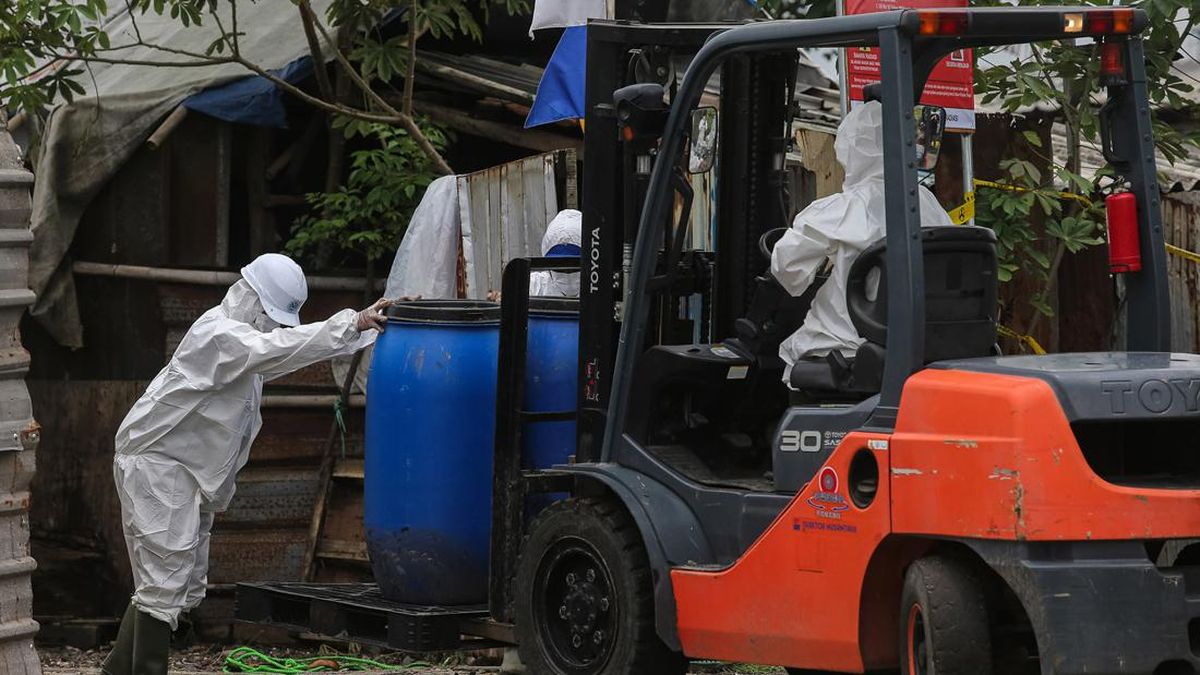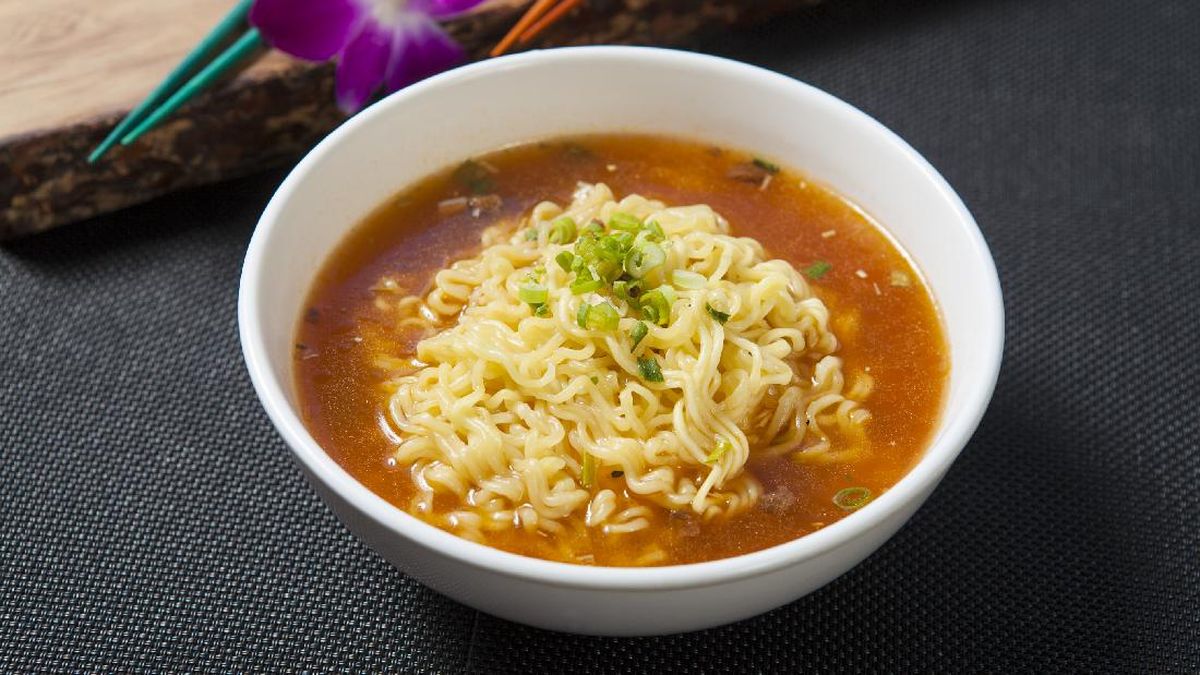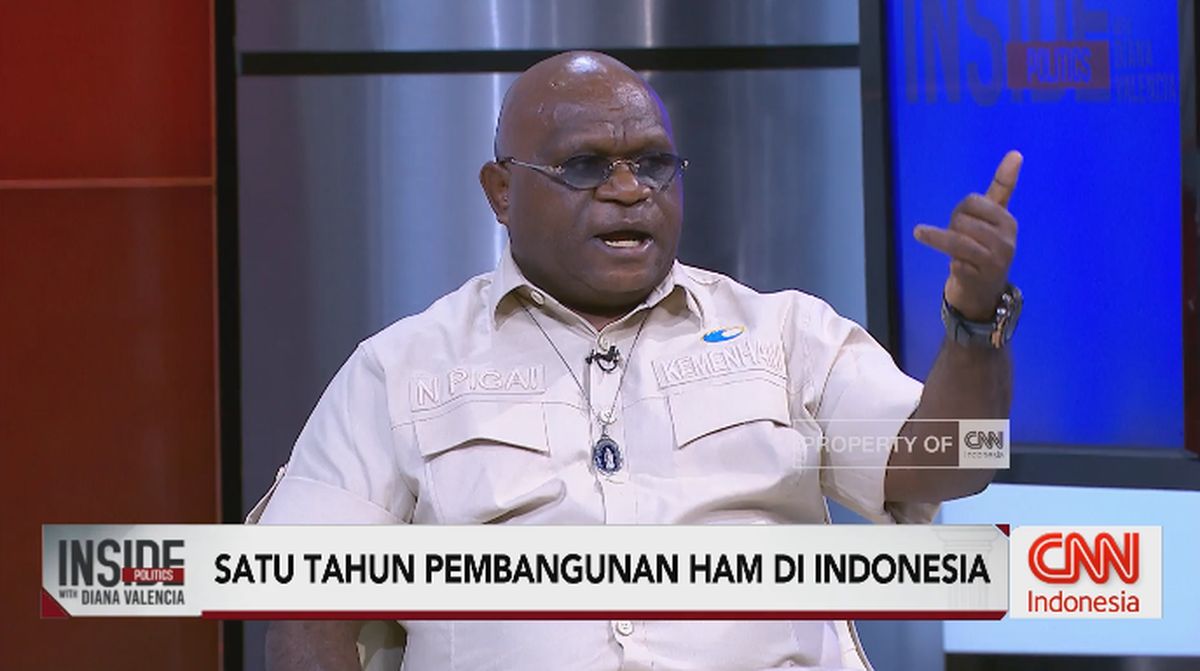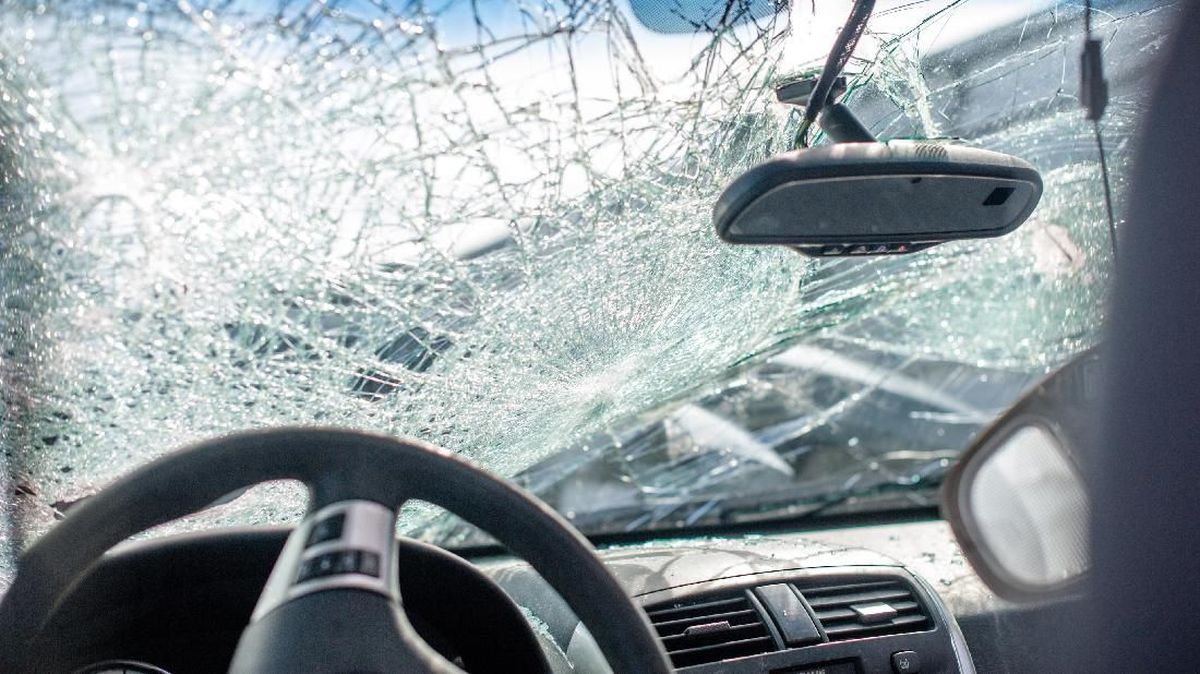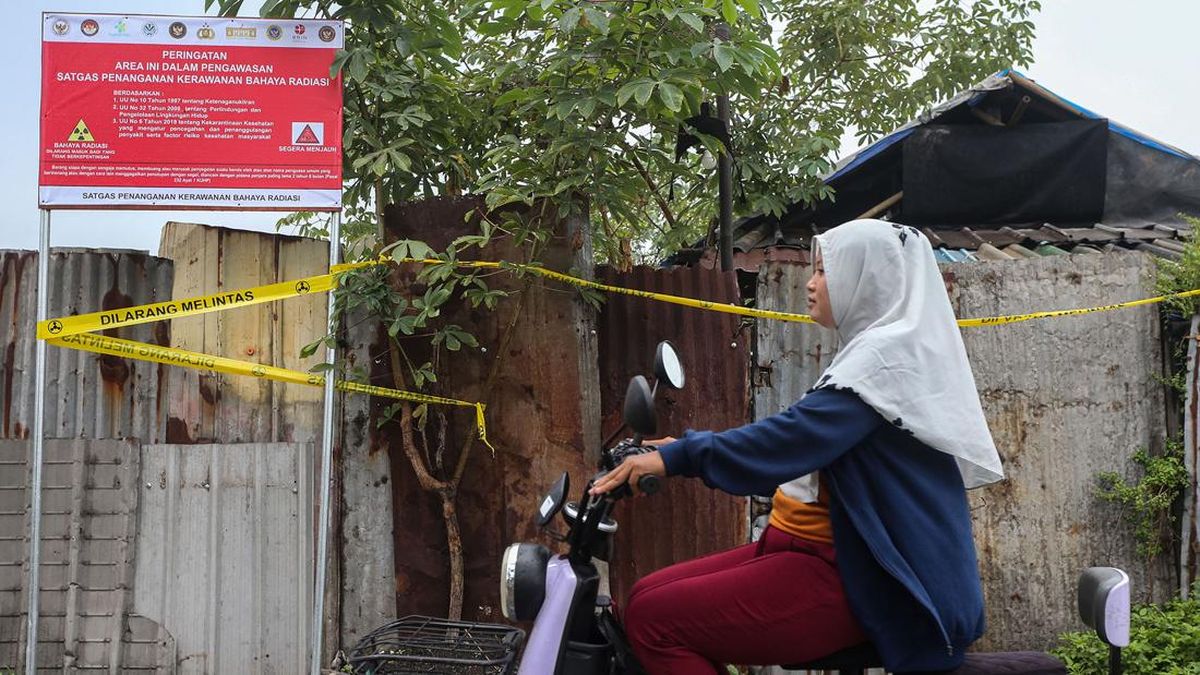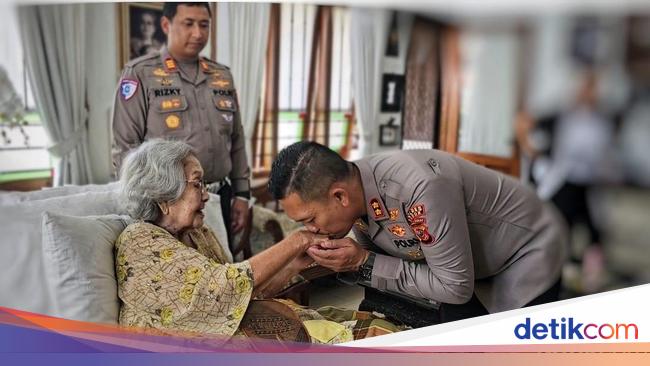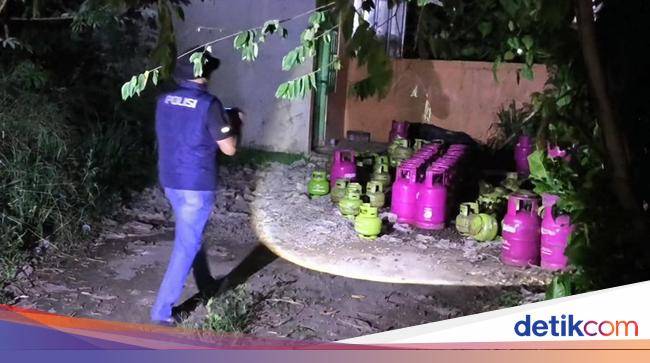Something magical, even spiritual, took place in Loribelle Spirovski’s Sydney studio this year. She pressed play on a William Barton recording and picked up a brush to begin painting the Indigenous musician’s portrait. Then the breakthrough happened.
“When I heard William’s voice on my speaker, it just told me to put the brush down,” she says. “It was a very visceral feeling, and … I threw the brush away, and I put a glove on, and I dipped my hand in the paint.”
She began painting with her fingers, something she had dabbled with for effect on other pieces, but this time the sweep and rub of fingers on canvas was everything. It was all the more wonderful because it came after years of struggling to pursue her art while nursing a debilitating injury that sends pins and needles into both her hands.

Spirovski’s Archibald Prize 2025 finalist, ‘Finger painting of William Barton’,Credit: Art Gallery of New South Wales / Jenni Carter
“As soon as I lifted my hand, it was just like it just knew exactly what to do, almost like muscle memory, and with my right hand as well. So I felt the pain, and I, you know, I consciously had to keep, like, setting my shoulder back, keep resetting, keep doing that.
“But I started crying and laughing and singing and dancing, and it was a completely …”
At this point, one of the perils of the Lunch With interview interrupts Spirovski’s flow. The patient staff at Marrickville’s Tita Carinderia Filipino cafe, who let us keep talking even as they are shutting up shop, ask if they can take away our plates.
Without missing a beat, Spirovski asks if they have a box so she can take away the remaining food. Born in Manila, she and her mum lived with relatives in the Philippines until she was eight; Spirovski can’t leave these morsels of memory behind.
Then we turn back to that day in the studio: “I had never felt so free, never felt so alive as that moment. And it felt like I had, I had arrived, like I was waiting, I was begging for this for so long.” After years of physical pain and mental anguish, Spirovski had found that holy grail of artistic endeavour – her unique voice – and painted a gloriously joyous painting. The portrait became one of the most striking finalists in this year’s Archibald Prize.
With a flowing mural of scarlet flowers sweeping over its walls, brightly patterned tablecloths, and kaleidoscopic strings of snack sachets hanging behind the counter, Tita Carinderia is as exuberant as the Barton portrait.
I know nothing about Filipino food but Spirovski is an enthusiastic teacher and takes me through the menu. It’s not the food she ate every day as a child, which was nothing fancy. “That’s my childhood right there,” says Spirovski, pointing to the fire-engine red cans of spam and corned beef on display over my shoulder on the cafe’s shelves.

The vegan adobo at Tita.Credit: Sam Mooy
Instead, Tita’s offers “fiesta” fare with a bit of a fast-food feel. It’s “rich food”, Spirovski explains. “So it’s the kind of food that you save for a special occasion.”
The exception is the adobo, which Spirovski says is traditionally made with pork or chicken. “It’s a way of cooking it, braising it, in soy sauce and vinegar, depending on where you’re from. Every place has a different version. So you can basically go to a Filipino person’s place and know where they’re from based on what’s in the adobo.” Coconut milk, sugar and peppercorns are other regional variations.
The pork is sold out so we order the not very traditional vegan adobo, the tapsilog and, for dessert, an ensaymada, which brings us to “ube”. Ube is a purple yam and a ubiquitous ingredient in Philippine cooking, especially sweets. Almost every pastry in the counter-top display cabinet seems to be pulsatingly purple. Our ensaymada is no different but is also sprinkled with yellow cheese. I have my doubts about this combination.
After ordering at the counter, we settle down to talk. I have followed Spirovski’s work ever since I commissioned her to paint a portrait of my child as an 18th birthday present. That major milestone was celebrated with a sad little pizza party via Zoom during the pandemic so arranging something more memorable seemed like a good counterpoint to the early lesson in sometimes-life-sucks.
After the lockdowns, Spirovski met us and took the photos that formed the basis of the work. The result is a treasured family memento, though in the intensity of the portrait’s gaze I see a premonition of the difficulties ahead for my child transitioning to adulthood under COVID’s long shadow.

Tita’s ube ensaymada.Credit: Sam Mooy
Those post-COVID years were formative for Spirovski too. It’s a complicated collage. There was the injury. “In September 2021, I wake up in the middle of the night and my arm feels like it’s been crushed by a cement roller. It’s just that sudden … and it happened every night.” It’s seven months before she can get a diagnosis: thoracic outlet syndrome.
There was the slow burn of memories evoked by the experience of accompanying her husband, the pianist Simon Tedeschi, on a cruise on the cusp of COVID. He was booked to play for the passengers. “I’ve never been around as many Filipinos since moving out of the Philippines,” she says. “Because almost all of the crew were Filipino. They all look like my uncles. They all look like my cousins, my aunties.” But she was not one of them – she was being served by them. “It was just such a strange, surreal experience.”
And then there was the destabilising effects of temporarily moving out of her inner west house so she could use the money she earned in 2020 (when everyone wanted a new painting to brighten up their lockdown walls) to renovate and build herself her first studio. “When you move house … things come up that you don’t expect.”
It led to a long period of self-examination: “Having that breakdown and having another breakdown, and then surviving and learning an awful lot.” This happened in tandem with the writing of a Proustian novel prompted by the cruise, circling around her childhood experiences. “Very vivid memories started to come up from the Philippines, and things that … I thought I’d already put to bed but, actually, I just ignored.”
We’ve picked a Filipino lunch spot because of her connection to her mother’s heritage, and I’m so glad we did because the adobo is delicious, accompanied by a memorable pickled carrot, and the tapsilog’s rice is fluffy and garlicky. My cold brew with calamansi – a type of lime – is a coffee-citrus revelation.
But Spirovski’s Serbian father is also part of her story, though war and immigration barriers kept them apart until she was seven. He was an engineer, building a bridge in Malaysia when he met her mother, whose career as a singer in hotel bands took her all over Asia.

Tapsilog with satisfyingly garlcky rice.Credit: Sam Mooy
They were married and living in the former Yugoslavia when war broke out in the 1990s. He moved to Australia while her pregnant mum went back to the Philippines until he could get a visa for her and his new daughter to join him.
In Sydney, he worked as a taxi driver. Spirovski ascribes her ferocious work ethic to his example. “I grew up thinking that … working hard for your family is the noblest thing you can possibly aspire to. That’s why I didn’t call myself an artist. Until last year I called myself a painter because it was like a trade, you know, honest, solid work.”
But reading her highly impressionist novel, White Hibiscus, published earlier this year, it’s clear Spirovski sees the world with the eyes of an artist – and it’s a gift to the reader to share that vision. Though she intended to be an art teacher when she finished her HSC, it’s no surprise that she ended up a full-time artist.
She was inspired to teach by her experience at Bonnyrigg High School in Sydney’s west. “The greatest gift I received as a teenager was my art teacher, Vicky … saying, basically, here’s the storeroom [full of art materials]. You can use anything you want … That was Charlie and the Chocolate Factory.”
She had to abandon teaching after suffering performance anxiety during her first stint in front of a class: “I had panic attacks every single day.”
She began painting portraits, selling a piece to a family friend and another to her boyfriend’s uncle. Then she started posting to Instagram and getting more commissions. When she entered the Portia Geach Award in 2014 and was accepted as a finalist, it was impossible to resist the pull of her vocation. Starting out from a little spare space near the door of her parent’s fibro home in Mount Pritchard, she has built a successful career, with shows in the US, Europe and London exhibiting works reminiscent of early German expressionism, heavy on symbolism. This year is the fourth she has been a finalist in the Archibald.

The bill at Tita’s Carinderia.
But throughout that time, she has struggled with self-doubt, and a sense that, like her taxi driver father, she had to keep working. “Nothing was scarier than a holiday … because I’m like, no, I will lose momentum. If I lose momentum, this house of cards that I built will completely collapse beneath me.”
Even as her injury kept ringing a red alarm to slow down, she continued to try to paint and to write. It led her to face one of the darker moments of her childhood, an experience of abuse, which she captures obliquely in the book. Did she always know she would tackle it in the writing? “I suspected I would have to because, if I was being actually honest, I couldn’t deny that that was the root of everything, and the root … of my insecurity … my relationship with work, my very toxic relationship with work.”
She realised writing White Hibiscus was an act of care for her five-year-old self. A friend recently asked her: “What did you let go of from writing the book?”
“And I immediately said: the abuse. The abuse, I let go of the abuse.”
I don’t think it is a coincidence that afterwards Spirovski felt the spark that inspired her to cast aside her brush to paint the Barton portrait. “I actually had a eureka moment,” she says. “Usually in the back of my mind, when I start painting, I have my Pantheon standing over my shoulder. Francis Bacon is there. Egon Schiele is there. John Singer Sargent, El Greco, Goya. They’re all standing there, and this time there was nothing but William’s music.”
Loading
Now she’s trying to absorb one of the big messages of the last few years: to look after herself. She has a 15-minute timer that she uses to force herself to take breaks when she’s painting, though she confesses that when she is deep in the midst of creation “that timer may as well not have existed”. I’m not sure if treating ourselves with a cheese-topped ensaymada counts as the healthiest form of self-care, but we share it anyway. Despite my misgivings, I enjoy its croissant-like butteryness. Sometimes you have to eat your fears.
White Hibiscus: A Portrait in Words (Upswell) out now. The Archibald Prize 2025 is at the Art Gallery of NSW until August 17.
Start the day with a summary of the day’s most important and interesting stories, analysis and insights. Sign up for our Morning Edition newsletter.



